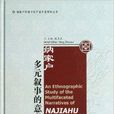基本介紹
- 書名:納家戶多元敘事的意義
- 作者:姜克銀 楊占武
- 出版日期:2012年12月1日
- 語種:英語
- ISBN:9787227053101
- 外文名:An Ethnographic Study of the Multifaceted Narratives of Najiahu Village
- 出版社:寧夏人民出版社
- 頁數:438頁
- 開本:16
- 品牌:寧夏人民
內容簡介,圖書目錄,
內容簡介
《納家戶多元敘事的意義(英文)》選擇寧夏回族自治區永寧縣納家戶村為研究對象,主要因為寧夏大多數穆斯林村落位於偏遠山區或川區且建村歷史較短,還未經歷或者正處於現代旅遊開發的初步階段,因此村寨變遷的軌跡還不明顯。擁有百餘年歷史的納家戶回族村離首府銀川市較近,近十幾年來伴隨著銀川的發展,經歷了大規模的深度旅遊開發,村寨意義也由此發生了天翻地覆的變化,因而為筆者進行“納家戶村落”這五個字的意義研究提供了客觀條件。此外,居住在納家戶的納氏祖先定居寧夏至今已有幾百年的歷史,因此可供考證的歷史文獻、古籍、方誌、府志等史料也較為充足,從而為筆者對納家戶意義的探索提供了寶貴的歷史文獻資料。從方法論的角度來講,國內英語語言文學專業運用人類學的方法蒐集分析文本的案例不多,對文化意義進行譜系學研究的案例也十分有限。
圖書目錄
序一
序二
前言
Chapter Introduction
1.1 Definition of Discourse
1.2 The Site of Najiahu Village
1.3 Concept of FTCHCBF
1.4 Definition on Hui Ethnicity
1.5 Research Goal, Objectives, Questions,
and Significance
1.6 Structure of Book
Chapter 2 Theoretical Context
2.1 Place, Discourse, Representation and Meaning
2.2 Tourism Studies In the Discursive Perspective
2.3 Genealogy and Meaning Ambiguity
2.3.1 Foucauldian Knowledge and Power
2.3.2 Particularity, Diversity and Meaning Ambiguity
Chapter 3 Research Methodology
3.1 Qualitative Study
3.2 Case Study
3.3 Discourse Analysis Approach to FTCHCBF
3.4 Genealogical Approach
3.5 Method of Oral History
3.6 Method of Ethnography
3.7 Synthesis and Coherence of the Approaches
Chapter 4 Discourse of FTCHCBF and Its Domination
4.1 Social Contexts of FTCHCBF's Construction
4.2 Formation Processes of FTCHCBF
4.3 Intertextuality and Genre Changes
4.4 Aspects of FTCHCBF as Discourse
4.5 Summary
Chapter 5 Trajectories and Fragments of the Past
5.1 Historical Events in Najiahu Village
5.2 Memories Recorded as Texts and Documents
5.3 A History of the Present
5.3.1 Essential Meaning and Najiahu Village
5.3.2 Removal of the Village Wall During China' s Agriculture Cooperation
5.3.3 Construction of Rows of New Houses in 1978
5.4 Revoicing Meanings: Fragments and Ambiguity
Chapter 6 Meanings Around the Mosque
6.1 Context for the Ethnographic Study
6.2 Ethnography of Mutiple Meanings
6.2.1 Nan Lao Fen
6.2.2 Si Fang Xing Zhai Zi
6.2.3 Shang Si
6.2.4 Nie Ma Zi
6.2.5 Ba Bao Cba
6.3 Coda:Caring for the Past
Chapter 7 Discussions and Conclusions
7.1 Site, Representation and Revoicing
7.2 Towards Diversity: the Implications of This Study
7.2.1 Multiplicity of Hui Ethnicity
7.2.2 Multicuhural Tourism
7.3 Contributions, Limitations and Suggestions
References
Appendices
序二
前言
Chapter Introduction
1.1 Definition of Discourse
1.2 The Site of Najiahu Village
1.3 Concept of FTCHCBF
1.4 Definition on Hui Ethnicity
1.5 Research Goal, Objectives, Questions,
and Significance
1.6 Structure of Book
Chapter 2 Theoretical Context
2.1 Place, Discourse, Representation and Meaning
2.2 Tourism Studies In the Discursive Perspective
2.3 Genealogy and Meaning Ambiguity
2.3.1 Foucauldian Knowledge and Power
2.3.2 Particularity, Diversity and Meaning Ambiguity
Chapter 3 Research Methodology
3.1 Qualitative Study
3.2 Case Study
3.3 Discourse Analysis Approach to FTCHCBF
3.4 Genealogical Approach
3.5 Method of Oral History
3.6 Method of Ethnography
3.7 Synthesis and Coherence of the Approaches
Chapter 4 Discourse of FTCHCBF and Its Domination
4.1 Social Contexts of FTCHCBF's Construction
4.2 Formation Processes of FTCHCBF
4.3 Intertextuality and Genre Changes
4.4 Aspects of FTCHCBF as Discourse
4.5 Summary
Chapter 5 Trajectories and Fragments of the Past
5.1 Historical Events in Najiahu Village
5.2 Memories Recorded as Texts and Documents
5.3 A History of the Present
5.3.1 Essential Meaning and Najiahu Village
5.3.2 Removal of the Village Wall During China' s Agriculture Cooperation
5.3.3 Construction of Rows of New Houses in 1978
5.4 Revoicing Meanings: Fragments and Ambiguity
Chapter 6 Meanings Around the Mosque
6.1 Context for the Ethnographic Study
6.2 Ethnography of Mutiple Meanings
6.2.1 Nan Lao Fen
6.2.2 Si Fang Xing Zhai Zi
6.2.3 Shang Si
6.2.4 Nie Ma Zi
6.2.5 Ba Bao Cba
6.3 Coda:Caring for the Past
Chapter 7 Discussions and Conclusions
7.1 Site, Representation and Revoicing
7.2 Towards Diversity: the Implications of This Study
7.2.1 Multiplicity of Hui Ethnicity
7.2.2 Multicuhural Tourism
7.3 Contributions, Limitations and Suggestions
References
Appendices

